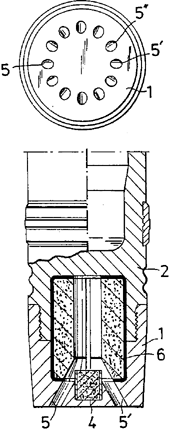 Most of the drag on an artillery shell comes from friction between the nose of the shell and the air, as the shell pushes air out of the way at very high speeds. But some of the drag on a shell comes from the sucking effect of the vacuum left behind the shell as it pushes air in front out of the way faster than air can move to fill the space left behind.
Most of the drag on an artillery shell comes from friction between the nose of the shell and the air, as the shell pushes air out of the way at very high speeds. But some of the drag on a shell comes from the sucking effect of the vacuum left behind the shell as it pushes air in front out of the way faster than air can move to fill the space left behind.
To combat this, many artillery shells employ a system called base bleed in which the shell produces gas at its rear to fill this vacuum. This gas produces very little thrust, but by reducing the effect of the vacuum it increases the range of the shell enormously, typically by around 30%. On the diagram on the right (taken from this patent) the top image shows a view from below, with the gas generator’s exhaust labelled “5”. The housing of the gas generator is labelled “1” and the casing of the shell “2”. The igniter that starts the gas generator is labelled “4” and the fuel charge that produces the gas is labelled “6”.
This was my first experience reading about some ballistic details, I didnt knew it before, thanks for this post.